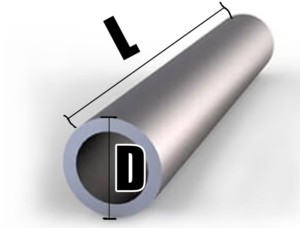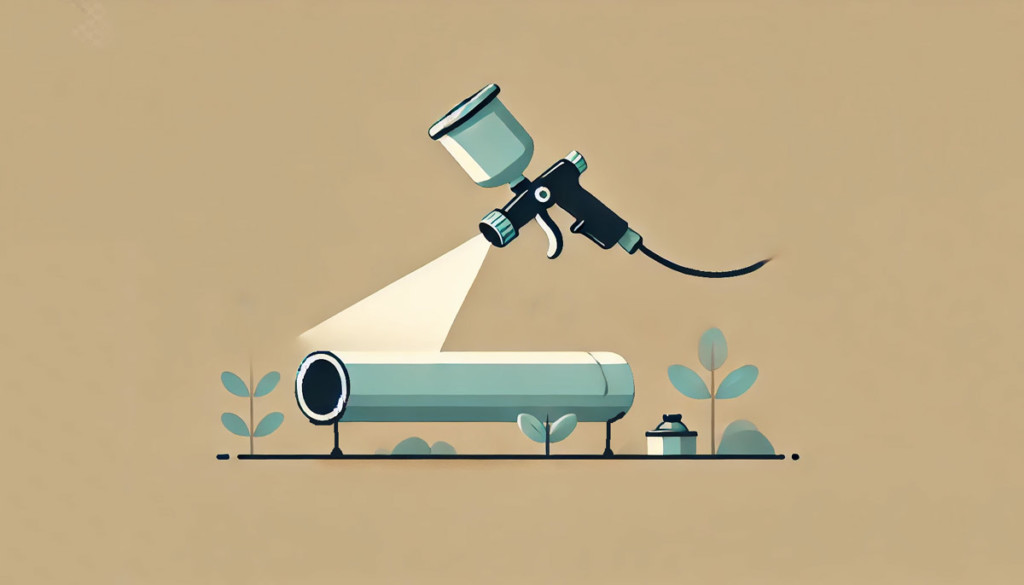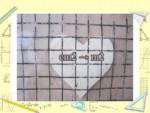This online tool calculates the surface area of a cylindrical pipe and estimates the amount of paint required to cover it. It supports metric (m², liters) and imperial (ft², quarts) units, making it suitable for any project.
Pipe Painting Area Calculator & Paint Amount Estimator
Calculate the painting area of a pipe and estimate the amount of paint required.
Surface Area
Estimated Paint Needed
How to Use the Tool
- Toggle the “Use Imperial Units” checkbox to switch between metric and imperial systems.
- Enter the pipe length and select the appropriate unit for each input (meters, centimeters, millimeters, feet, inches, or yards).
- Enter the pipe diameter and select the corresponding unit.
- Click the Calculate button to get the surface area and paint estimate.
- The result will show the surface area and the estimated amount of paint needed.
- Select the number of decimal places for the result if needed (default is 2).
- To copy the result, click the Copy Results button.
- To reset all fields, click the Clear All button.
Formulas Used in The Calculator
1. Pipe Surface Area Calculation (Lateral Surface):
A = π × D × L
Where:
- A = Surface area (lateral) of the cylindrical pipe
- π ≈ 3.14159 (Pi)
- D = Diameter of the pipe
- L = Length of the pipe
For more details on surface area calculations for cylindrical objects, visit the Math Open Reference – Cylinder Surface Area.
2. Paint Estimation Formula (Metric System):
Paint Needed (liters) = Surface Area (m²) ÷ 10
1 liter of paint covers approximately 10 m².
For more details on paint coverage standards, refer to Dulux Paint Calculator Guide.
3. Paint Estimation Formula (Imperial System):
Paint Needed (quarts) = Surface Area (ft²) ÷ 100
1 quart of paint covers approximately 100 ft².
For more information on imperial coverage standards, visit PPG Paint Calculator.
Unit Conversion
1. Metric Unit Conversion:
To convert smaller units to meters for consistent results:
- Millimeters to Meters: L(m) = L(mm) ÷ 1000
- Centimeters to Meters: L(m) = L(cm) ÷ 100
Source: NIST Metric Conversion Card.
2. Imperial Unit Conversion:
To convert smaller units to feet for accurate area calculations:
- Inches to Feet: L(ft) = L(in) ÷ 12
- Yards to Feet: L(ft) = L(yd) × 3
Source: Encyclopedia Britannica – Imperial Units.
Precalculated Pipe Painting Estimates
These estimates were calculated using the formulas above.
| Pipe Diameter (mm) | Pipe Length (m) | Surface Area (m²) | Paint Needed (liters) |
|---|---|---|---|
| 50 | 10 | 1.57 | 0.16 |
| 100 | 5 | 1.57 | 0.16 |
| 150 | 20 | 9.42 | 0.94 |
| 200 | 10 | 6.28 | 0.63 |
| 250 | 30 | 23.56 | 2.36 |
| 300 | 15 | 14.13 | 1.41 |
| 400 | 12 | 15.08 | 1.51 |
| 500 | 25 | 39.27 | 3.93 |
| 600 | 8 | 15.08 | 1.51 |
| 700 | 10 | 21.99 | 2.20 |
| 800 | 18 | 45.24 | 4.52 |
| 900 | 5 | 14.13 | 1.41 |
| 1000 | 10 | 31.42 | 3.14 |
| 1200 | 15 | 56.55 | 5.66 |
| 1500 | 20 | 94.25 | 9.43 |
FAQ: Metal and Pipe Painting
1. What types of paint are best for metal surfaces?
The most common types of paint for metal surfaces are:
- Oil-based paint: Durable and provides a strong, rust-resistant finish. Ideal for outdoor metal surfaces.
- Acrylic paint: Water-based, quick-drying, and suitable for indoor metal surfaces.
- Epoxy paint: Excellent for industrial and heavy-duty applications due to its chemical resistance and durability.
- Polyurethane paint: Used for high-performance coatings with excellent gloss and weather resistance.
2. What surface preparation is needed before painting a metal pipe?
Proper surface preparation is essential for a long-lasting finish:
- Remove rust: Use a wire brush, sandpaper, or a chemical rust remover.
- Clean the surface: Wash with a degreaser to remove oil, dirt, and contaminants.
- Smooth the surface: Sand to remove old paint or rough areas.
- Apply primer: Use a metal-specific primer for better adhesion and rust protection.
3. What are the common types of metal primers?
Primers improve paint adhesion and prevent corrosion. Common types include:
- Zinc-rich primers: Provide excellent rust protection.
- Epoxy primers: Offer superior adhesion and chemical resistance.
- Acrylic primers: Suitable for mild environments and quick-drying applications.
4. What is the best way to paint a metal pipe?
Follow these steps for optimal results:
- Prepare the surface as described above.
- Apply the primer and let it dry completely.
- Use a brush, roller, or spray gun to apply the paint evenly.
- Allow the paint to dry between coats (usually 4-6 hours).
- Apply a second coat if needed for full coverage.
5. How long does metal paint take to dry?
Drying times depend on the type of paint:
- Oil-based paint: 8-24 hours to dry, full cure in 7 days.
- Acrylic paint: 1-2 hours to dry, full cure in 24-48 hours.
- Epoxy paint: 4-6 hours to dry, full cure in 5-7 days.
6. What factors affect the durability of pipe paint?
Several factors can impact paint longevity:
- Surface preparation: Poor preparation leads to peeling and rust.
- Paint type: Use high-quality, weather-resistant paint for outdoor pipes.
- Environmental conditions: Moisture, UV exposure, and temperature extremes reduce paint life.
- Application method: Even application and adequate drying time ensure durability.
7. How can I prevent rust on metal pipes?
Use a combination of protective measures:
- Apply a rust-inhibiting primer before painting.
- Choose paint with corrosion-resistant properties.
- Inspect and maintain the surface regularly.
8. What is the difference between single-coat and multi-coat systems?
Single-coat systems offer basic protection with one application, while multi-coat systems combine primer, base coat, and topcoat for better durability and aesthetics.
9. Can I paint galvanized pipes?
Yes, but special preparation is required. Clean the pipe with a degreaser, apply an etching primer, and use paint designed for galvanized metal.
10. How often should I repaint outdoor metal pipes?
It depends on the environment and paint type. Typically, outdoor pipes should be repainted every 5-10 years for protection.
11. What safety precautions should I take when painting metal?
Follow these safety tips:
- Work in a well-ventilated area.
- Wear protective gear: gloves, goggles, and a mask.
- Avoid open flames if using flammable paints.
CalcuLife.com
Please tell us about your experience using this tool and painting pipes in the comments below. Any adjustments needed? Any additional features?










Leave A Comment